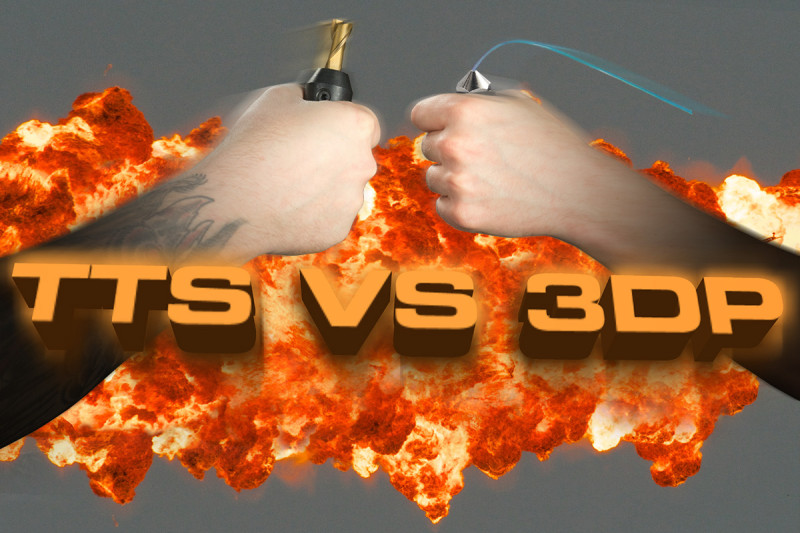Now that 3D printers have emerged as the tool-of-choice for many makers and educators, there seems to be a line drawn in the sand between CNC and additive manufacturing. Many manufacturers even worry that 3D printing may one day replace traditional manufacturing in the form of at-home production (perhaps sooner than we think).
While these concerns are somewhat legitimized by a quickly emerging market for 3D printing, the gap between printed parts and components that are truly usable is still massive. Some would argue that the biggest hindrance to at-home manufacturing is simply cost (which is quickly diminishing), but as most CNC users would agree, it is much more than that.
The rhetoric in the 3D printing versus CNC debate is often centered on quality and cost, but this is where machines like Tormach’s PCNC 1100, PCNC 770, 15L Slant-PRO, PSG 612, carve their place into the marketplace. 3D printers, like the MakerBot, Lulzbot, and Form1, are fairly inexpensive ($3,800, $2,200, and $3,300, respectively), but many users don’t have a full comprehension of a 3D printer’s capabilities. Printers that are capable of the fantastic imagery that is touted in the marketing campaigns can cost upwards of $15,000 to $750,000, or more. 3D printers are certainly capable of great things (including metal component production), but not on a budget – direct metal laser sintering (DMLS) machines can cost upwards of $1M. While the newfound fanfare for this technology is helping it progress, we are far from being able to produce metal components in non-industrial environments, unless it’s being done on a Tormach PCNC or similar.
Tormach has etched out a unique place in the market of CNC mills, lathes, and cutting machines because the gap between professional and consumer is being bridged. Prosumer is the new emerging term. While this buzzword may often be a trigger-happy description for marketers, here at Tormach, we consider this term essential.
3D printing is certainly buzzworthy (we even have a couple in our office), but there is still an important gap between CNC and 3D printing. This gap shouldn’t be so much a line in the sand, but rather, a partnership of the right tools for each user. Both machines are capable of intruding on the other’s place in the market, but where each thrives at affordable prices is important to consider.
CNC mills are ideal for projects that require high-precision and ready-to-use materials, whereas 3D printers are better for conceptual prototypes and visual justifications. Both types of machines can be used within these arenas, but they vary greatly in efficiency and quality.
What the CNC versus 3D printing debate boils down to is the weighing of capability and quality against price and efficiency – the rubber hits the road in a debate about budget and need. With an unlimited budget, I’d have both a million dollar stereolithography printer and an industrial CNC mill with all the bells and whistles (i.e. an array of tools, a fourth axis, etc.), but it’s an exciting time to be an engineer right now in that I can have a PCNC 1100 and a Form 1 printer in my garage for less than $20k and accomplish many of the same things. CNCs and 3D printers both have their place, and as the market continues to adapt to an ever-changing world, these machines each have their place, side by side.


